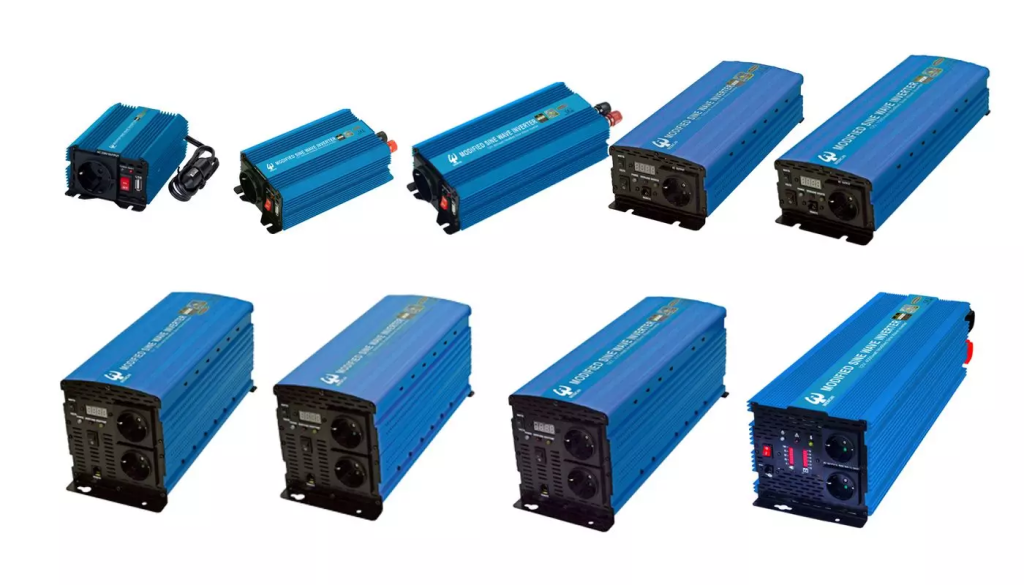Pure Sine Wave vs. 修正正弦波: Which is Better?
Pure Sine Wave vs. 修正正弦波: Which is Better?
Introduction
The choice between a pure sine wave inverter and a modified sine wave inverter is a critical decision for anyone looking to convert DC (direct current) power into AC (alternating current). These inverters serve as the backbone of various power systems, from household appliances to industrial equipment and renewable energy sources. In this comprehensive guide, we will delve into the differences, advantages, and disadvantages of pure sine wave and modified sine wave inverters to help you make an informed choice that best suits your specific needs.

Understanding the Basics
Before we explore the comparison, it’s important to understand the fundamental concepts of sine wave and modified sine wave inverters:
Pure Sine Wave Inverters:
- Pure sine wave inverters generate electrical output that precisely replicates the smooth and sinusoidal waveform of grid-supplied power. This clean and stable power output closely resembles the AC power supplied by utilities.
- Pure sine wave inverters are designed to accommodate a wide range of electrical devices, including sensitive electronics, motors, and appliances. They ensure optimal performance and prevent equipment damage, making them suitable for a vast array of applications.
- This high-quality AC power output is essential for devices that rely on precise timing, such as clocks, motor-driven equipment, and audiovisual systems. It eliminates humming sounds in audio equipment and minimizes flicker in lighting.

Modified Sine Wave Inverters:
- Modified sine wave inverters, on the other hand, produce an AC output that approximates a square wave or a stepped waveform. This waveform is a simplified version of a pure sine wave, with sharp edges and shorter duration at peak voltage levels.
- Modified sine wave inverters are cost-effective and can power many common devices, including heaters, pumps, and incandescent lights. However, they may struggle to provide optimal performance for more sensitive or precision equipment.
- Devices that operate on modified sine wave power can sometimes experience humming noises, reduced efficiency, and potential long-term wear and tear.

Advantages and Disadvantages of Pure Sine Wave Inverters
Pure sine wave inverters offer several advantages:
- Universal Compatibility: Pure sine wave inverters are compatible with virtually all types of electrical devices, ensuring that sensitive electronics and appliances operate efficiently and without any risk of damage.
- Improved Efficiency: Many devices operate more efficiently on pure sine wave power, resulting in lower power consumption and cost savings over time.
- Minimal Electromagnetic Interference: Pure sine wave inverters produce minimal electromagnetic interference (EMI), making them suitable for applications that require clean power, such as telecommunications equipment and medical devices.
- Wide Range of Applications: From home power backup systems to solar installations and RVs, pure sine wave inverters are versatile and suitable for a broad spectrum of applications.
However, they also have some drawbacks:
- Cost: Pure sine wave inverters are typically more expensive than their modified sine wave counterparts due to the complexity of generating a clean sinusoidal waveform.
- Energy Loss: The process of generating a pure sine wave results in some energy loss, which can affect overall efficiency.
Advantages and Disadvantages of Modified Sine Wave Inverters
Modified sine wave inverters have their own set of advantages and disadvantages:
Advantages:
- Cost-Effective: Modified sine wave inverters are more affordable, making them an attractive option for those on a budget.
- Basic Device Compatibility: They can power a wide range of common devices, such as power tools, heaters, and pumps.
- Simplicity: The simplicity of the waveform generation contributes to their cost-effectiveness and reliability.
Disadvantages:
- Compatibility Issues: Modified sine wave inverters are not suitable for devices that require precise and clean AC power, such as sensitive electronics, audiovisual equipment, and motors. Using them with such devices can result in inefficiency, humming noises, and potential damage.
- Reduced Efficiency: Devices that run on modified sine wave power may consume more energy and exhibit reduced performance compared to pure sine wave power.
- Limited Applications: Modified sine wave inverters are best suited for basic applications and may not be the ideal choice for systems that demand clean and stable power.
Choosing Between Pure Sine Wave and Modified Sine Wave Inverters
When deciding between pure sine wave and modified sine wave inverters, consider the following factors:
- Device Compatibility: Start by assessing the devices you plan to power with the inverter. If you have sensitive electronics or appliances, a pure sine wave inverter is the safer choice to ensure o



